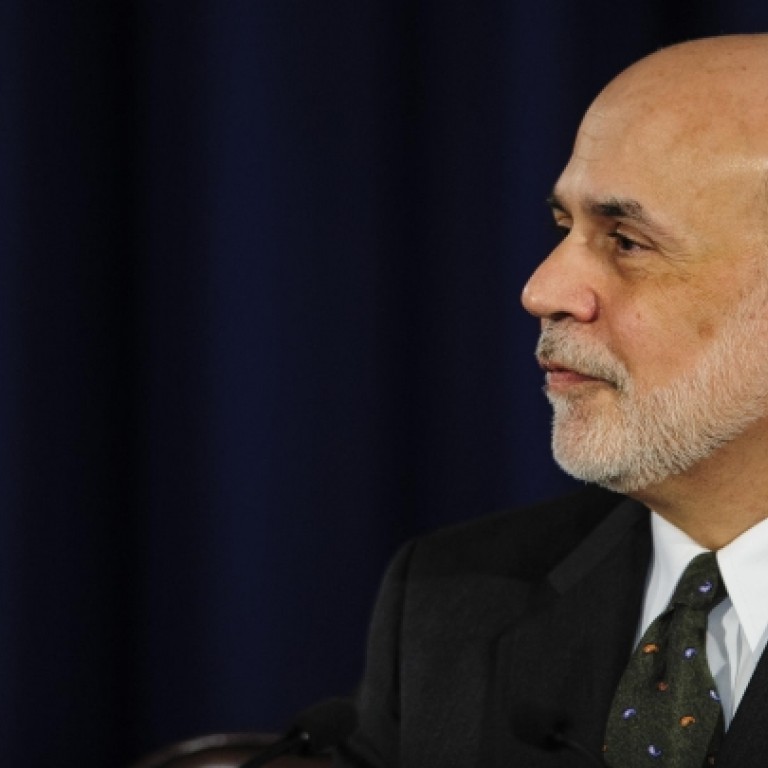
Blurry view on Fed policy
Bernanke's comments on future course of the US central bank's quantitative easing policy rattle markets, leaving investors confused
Federal Reserve chairman Ben Bernanke seemed a little nervous at his news conference on Wednesday. His recent comments about the future course of monetary policy had rattled investors and driven bond yields up, tightening financial conditions in a way the Fed did not want.

Fortunately, the policy itself is basically good - but that is despite, not because of, the ever-evolving formulas used to explain it.
Growth in the United States is still sluggish, unemployment is still high and inflation is running well below the Fed's target and falling. That suffices to justify interest rates at zero until further notice, together with additional large-scale asset purchases - which is what the Fed intends.
There are dangers in this policy. Quantitative easing is an experiment and involves risks. Bernanke summed these up drily in a recent speech: there is the risk that long-term interest rates will remain low (leading investors to recklessly "reach for yield") or they will not (imposing losses on investors when rates rise and bond prices fall).
The point is, in current circumstances, every course involves risk. Tightening monetary policy prematurely, as Bernanke has often explained, courts the greatest danger - that of bringing a hesitant recovery to a stop. On a balance of risks, aggressive monetary stimulus still makes sense.
Yet the past few weeks showed that the Fed has a serious credibility problem. The central bank's formal statement this week failed to acknowledge this but Bernanke's news conference showed that the Fed is concerned.
Bernanke triggered the recent rise in long-term bond yields when he said last month that "in the next few meetings, we could take a step down in our pace of purchases".
One could argue that he was merely stating the obvious, but the markets took it as important new information. In itself, that need not have been troubling. The problem for the Fed is that investors did not interpret it as good news about the economy but as bad news about the Fed's reliability.
As the economy strengthens, one would expect long-term interest rates to rise. But the recent rise in bond yields coincided with unexciting jobs data and very low inflation - inconsistent with the "strong economy" story.
The implication is that investors thought the Fed was bringing forward its plans not just to taper quantitative easing but also, crucially, to start raising short-term interest rates.
Bernanke tried to address this confusion this week. He emphasised for the umpteenth time that the decision on tapering quantitative easing is separate from the decision on starting to raise short-term rates. All being well, tapering would start later this year, with asset purchases continuing next year until unemployment falls to 7 per cent.
The Fed has said interest rates will not rise until unemployment has fallen to 6.5 per cent. And, Bernanke added with emphasis, perhaps not even then: these numbers are "thresholds" not "triggers". So the Fed will merely start thinking about raising rates once unemployment falls to 6.5 per cent, and might well choose not to act at that point.
And it is always possible, Bernanke said in reply to another question, the unemployment threshold for interest rates (and presumably therefore also for quantitative easing) will be revised - more likely down than up.
The intention behind Bernanke's latest elaborations is simple. He means to assure the markets that stimulus will not be withdrawn abruptly or too soon. Quantitative easing will be tapered as the labour market strengthens, but not stopped all of a sudden.
Moreover, Bernanke repeats, a slower rate of easing is still stimulus - as is no easing at all, for that matter, so long as the Fed hangs on to its existing stock of assets. Raising short-term rates lies even further in the future. Perhaps that message, Bernanke's main point, got through: the Fed is not about to hit the brakes.
But under precisely what circumstances the stimulus will eventually start to be withdrawn - which is what investors want to know, and is the message Bernanke keeps saying he means to impart with his commitment to "forward guidance" and transparency - the new refinements really do not help.
